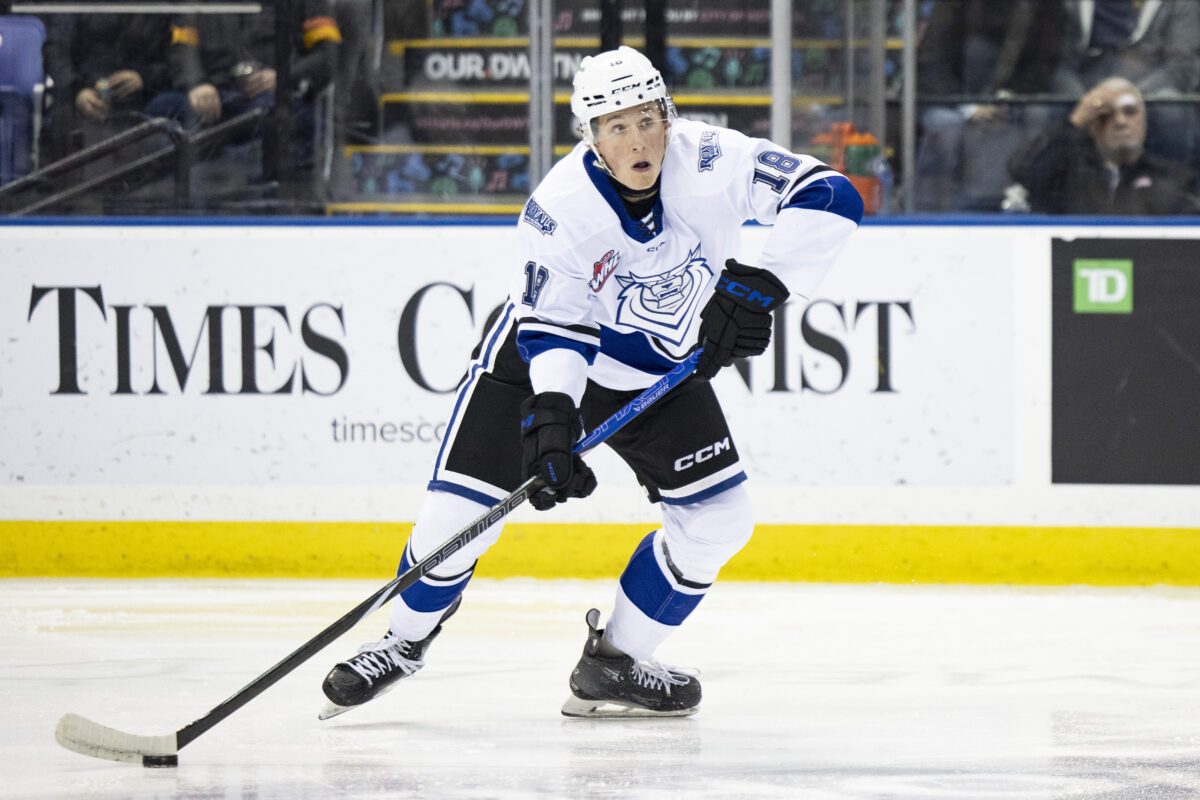In early 2026 NHL Draft discussions, two names have dominated the headlines: Gavin McKenna and Keaton Verhoeff. The former, who surpassed Connor Bedard‘s draft-minus-one totals in the Western Hockey League (WHL), is a generational prospect—the numbers at all levels have been jaw-dropping.
Much more quietly, Verhoeff has a case for the “generational” label, too. The 6-foot-4, 212-pound defenseman had an exceptional 2024–25 campaign and has been a huge standout at the Hlinka Gretzky Cup. While the right-shot blueliner might not get taken with the top pick, his future is brighter than he’s getting credit for.
I’m not the first to say it, but we may be looking at the best defensive prospect since Rasmus Dahlin. With a claim like that, let’s briefly dive into his game to see what the hype is all about.
Verhoeff’s Draft-Minus-One Season
As a 16-year-old defenseman, Verhoeff was a true game-breaker for the Victoria Royals last season. The numbers are partial evidence: he became the first WHL defenseman in four decades to have a 20-goal season at his age. With 45 points across 63 regular-season contests and an impressive playoff run to boot, stats alone prove his worth.
Related: 2026 NHL Draft Rankings: Baracchini’s Way-Too-Early Top 32
Despite his youth, Verhoeff was a major difference-maker on a contending Victoria roster. Arguably the most valuable defenseman on a team that topped the B.C. Division with 91 points and advanced to the second round of the postseason, his stock is consequently through the roof. But that’s only a surface-level analysis—even the numbers don’t do him justice.

For Verhoeff, it’s more of a “watch to understand” ordeal. In preparation for the 2025 NHL Draft, I tuned into a few early-season Royals games to get a better understanding of what top prospect Cole Reschny—selected 18th by the Calgary Flames—had to offer. While he ended up being one of my favorites of last year’s class, the spotlight was often shared with Verhoeff. The two controlled the pace of games together.
Verhoeff’s impact came with his all-around skill set. Games flowed through him—shutting opponents down, breakout passes, and offensive zone support. His goal-scoring prowess proves his ability in the latter, but he was arguably most impressive defensively and in transition. He used his big frame and overall defensive acumen to prevent chances against, while his retrieval, skating, and puck-moving ability helped drive the pace of play.
In his draft-minus-one season, Verhoeff played like a future No. 1 defenseman. This combination of size, tools in all three zones, and production isn’t the norm for a 16-year-old blueliner—it only comes once or twice in a generation.
Verhoeff’s Performance at the Hlinka Gretzky Cup
In Matthew Schaefer-esque fashion, Verhoeff has looked like a more dynamic version of his 2024–25 self at the Hlinka Gretzky Cup. By my eye test, he’s always been the best player on the ice—driving the play heavily in Canada’s favor while taking on the toughest assignments. Though his nation has cruised through three contests, his three points and plus-5 rating are impressive nonetheless.
His performance thus far only strengthens the argument that he’s the best defensive prospect we’ve seen since Dahlin. The Buffalo Sabres captain is a more ruthless hitter, but that’s the kind of vibe I’m getting here. Verhoeff has been incredible, and the impact is off the charts.
With all this said, McKenna should still be the first player off the board at the 2026 NHL Draft. But the trajectories of these two players are a lot closer than some are willing to accept. Verhoeff is a generational defensive prospect, and the next several months should only help his case. Between him and McKenna, the battle to the top could get interesting.
Sign up for our FREE NHL Prospects & Draft Substack newsletter
